Why Vitamin D Matters for Bone Health
Vitamin D serves as a key regulator in calcium metabolism, enabling your body to absorb this essential mineral from your diet. Without adequate vitamin D, your body can only absorb 10-15% of dietary calcium, potentially leading to weakened bones and increased fracture risk.
Beyond calcium absorption, vitamin D contributes to:
- Maintaining proper bone mineralization
- Supporting muscle function and reducing fall risk
- Potentially reducing inflammation that can affect bone health
- Promoting overall immune system function
While the recommended daily intake for most adults is 600-800 IU (15-20 mcg), many people struggle to meet these levels naturally, especially during winter months or in northern regions.
Recent research suggests that higher vitamin D levels may be optimal for bone health, with blood levels between 40-70 ng/mL considered ideal for preventing bone problems.
Sunlight: Your Body’s Natural Vitamin D Factory

Your skin contains a type of cholesterol that, when exposed to UVB radiation from sunlight, transforms into vitamin D. This natural production method is so efficient that brief, regular sun exposure can meet most of your vitamin D needs.
Safe Sun Exposure Guidelines
The amount of time needed varies based on several factors:
| Factor | Consideration |
| Skin tone | Darker skin requires more sun exposure (melanin reduces vitamin D production) |
| Time of day | 10 AM to 3 PM provides optimal UVB exposure |
| Season | Summer months offer more vitamin D-producing UVB rays |
| Geographic location | Closer to the equator = more year-round vitamin D production |
| Age | Older adults produce less vitamin D from the same amount of sun exposure |
For most people, 5-30 minutes of sun exposure to the face, arms, and legs two to three times per week can help maintain adequate vitamin D levels. This exposure should occur without sunscreen, as SPF 15 or higher blocks 99% of vitamin D production.
Balance is crucial. While sun exposure is beneficial for vitamin D production, too much can increase skin cancer risk. Aim for short periods of unprotected exposure, then apply sunscreen or cover up for longer outdoor activities.
Want to learn more about getting sunlight safely while maximizing vitamin D production?
Best Food Sources of Vitamin D for Bone Health
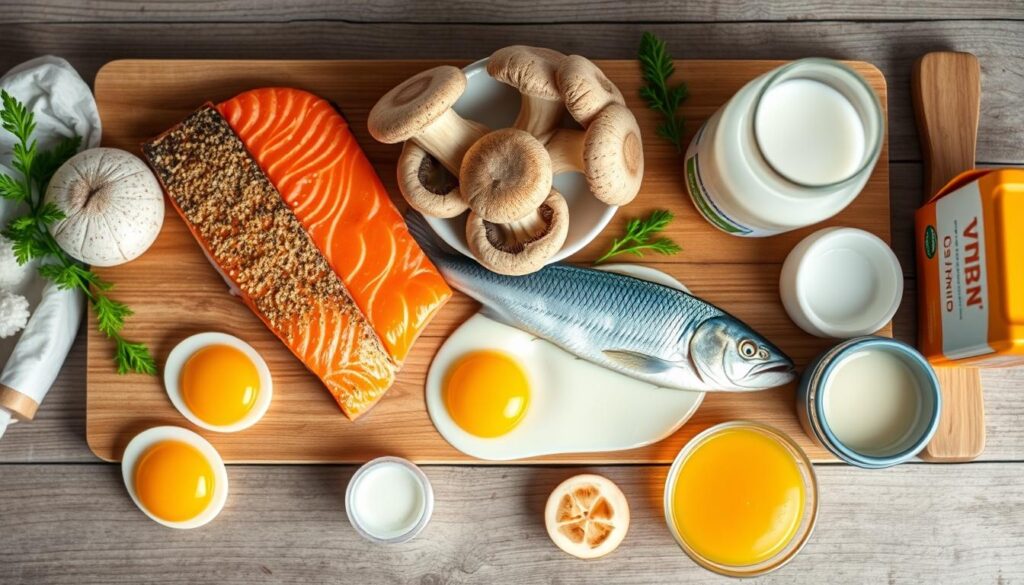
While few foods naturally contain high levels of vitamin D, incorporating specific options into your diet can significantly boost your intake without supplements.
Fatty Fish and Seafood
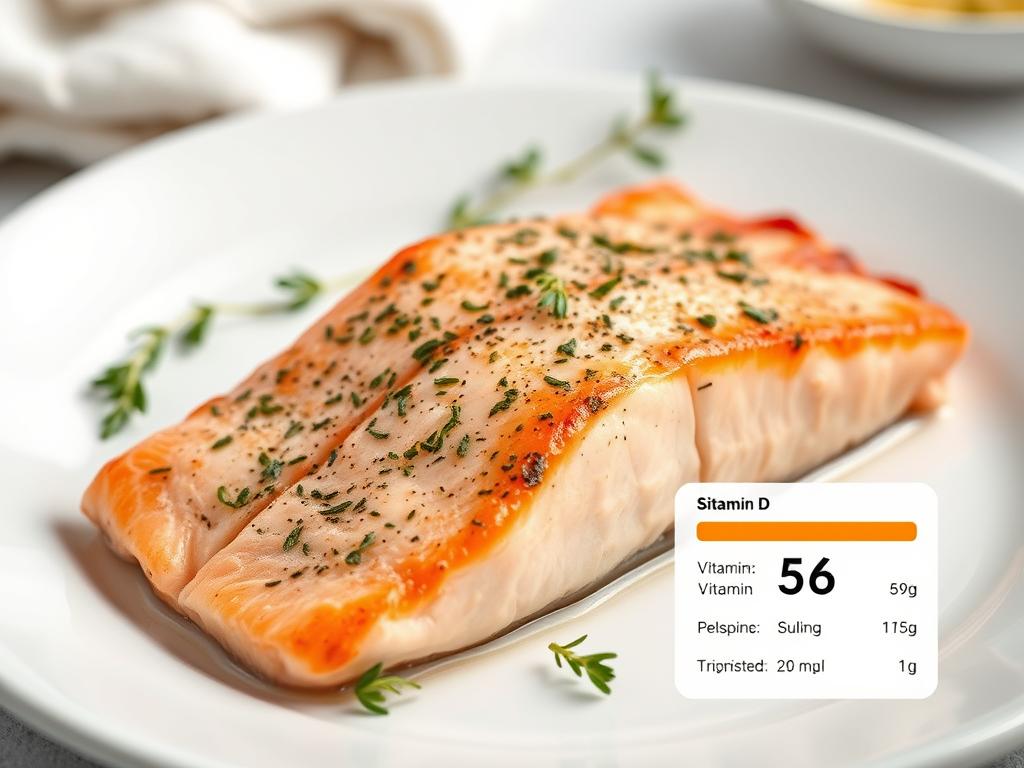
Fatty fish are among the richest natural sources of vitamin D:
- Wild-caught salmon: 570-990 IU per 3.5-ounce (100g) serving (70-124% of daily value)
- Mackerel: 643 IU per 3.5-ounce serving (80% of daily value)
- Herring: 167 IU per 3.5-ounce serving (20% of daily value)
- Canned light tuna: 269 IU per 3.5-ounce serving (34% of daily value)
- Sardines: 193 IU per 3.5-ounce serving (24% of daily value)
Aim to include fatty fish in your diet 2-3 times per week to significantly boost your vitamin D intake. Wild-caught varieties typically contain higher levels than farmed fish.
Looking for delicious ways to incorporate more fatty fish into your diet?
Mushrooms: The Plant-Based Vitamin D Powerhouse
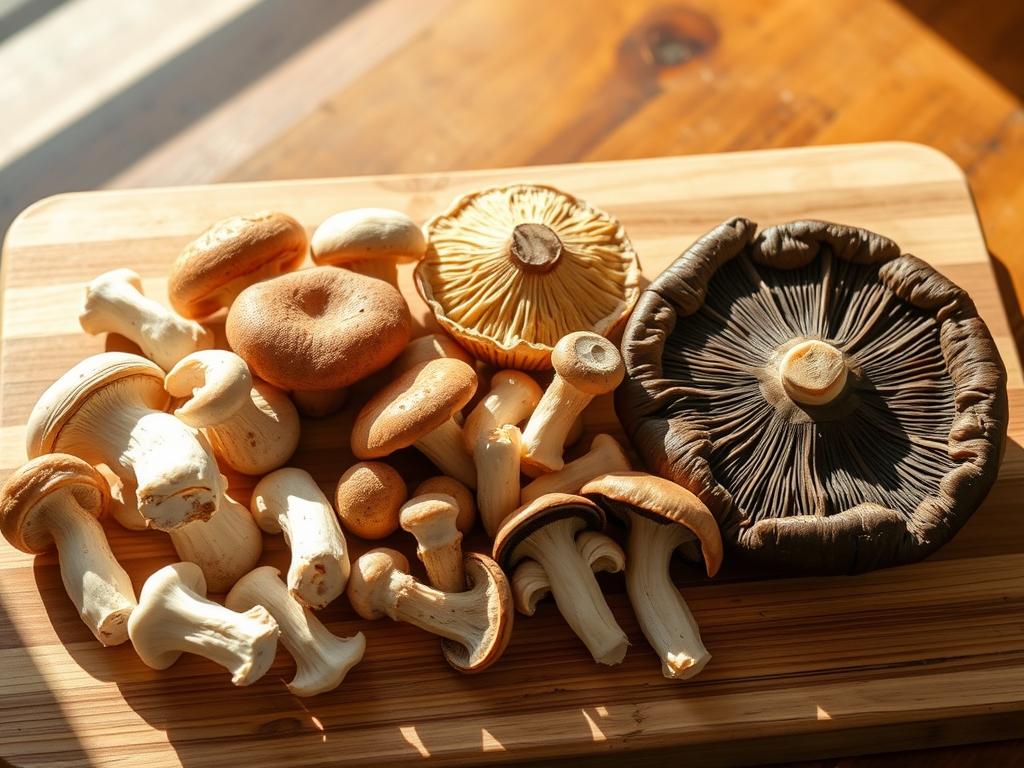
Mushrooms are unique among plant foods as they can synthesize vitamin D when exposed to UV light, similar to human skin:
- UV-exposed mushrooms: Up to 1,100 IU per cup (139% of daily value)
- Wild mushrooms (morels): 136 IU per cup (17% of daily value)
- Regular commercially grown mushrooms: Minimal vitamin D unless UV-treated
Look for mushrooms labeled as “UV-treated” or “vitamin D-enriched” at your grocery store. Alternatively, you can increase the vitamin D content of store-bought mushrooms by placing them gill-side up in direct sunlight for 15-30 minutes before cooking.
Egg Yolks: A Convenient Vitamin D Source
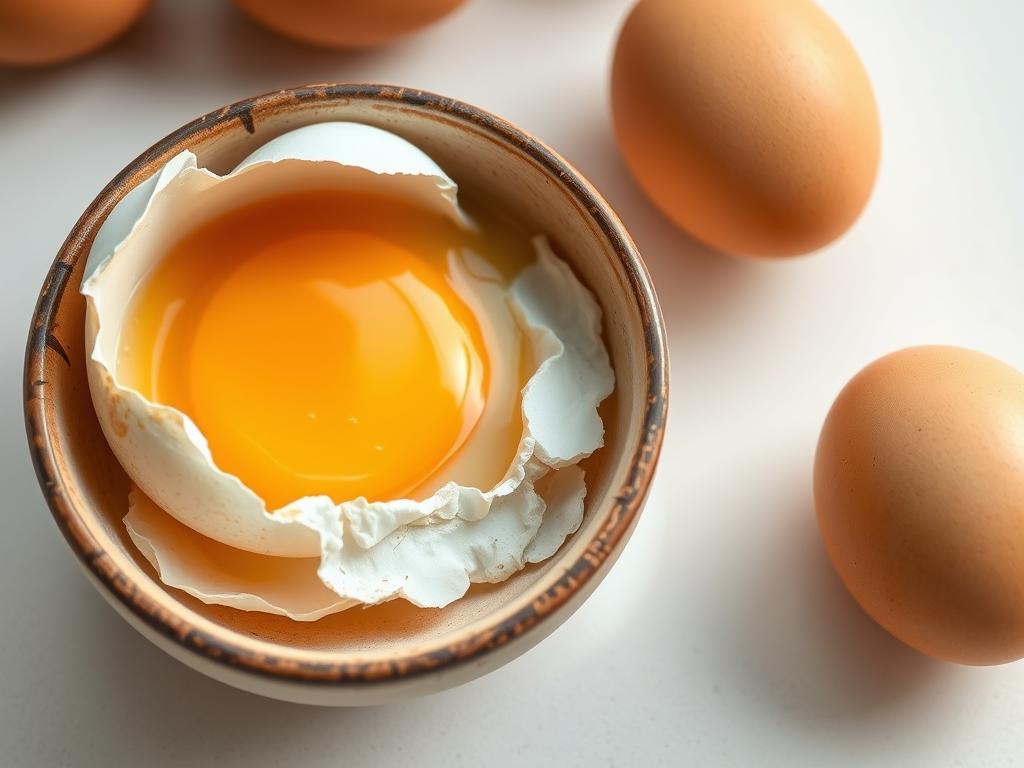
Egg yolks contain modest but significant amounts of vitamin D:
- One large egg yolk: 41 IU (5% of daily value)
- Pasture-raised eggs: Potentially higher levels due to sun exposure of hens
- Vitamin D-enriched eggs: Up to 120 IU per yolk (look for special labeling)
Including 1-2 eggs daily can contribute to your overall vitamin D intake, especially when combined with other sources.
Fortified Foods: Supplementing Without Pills
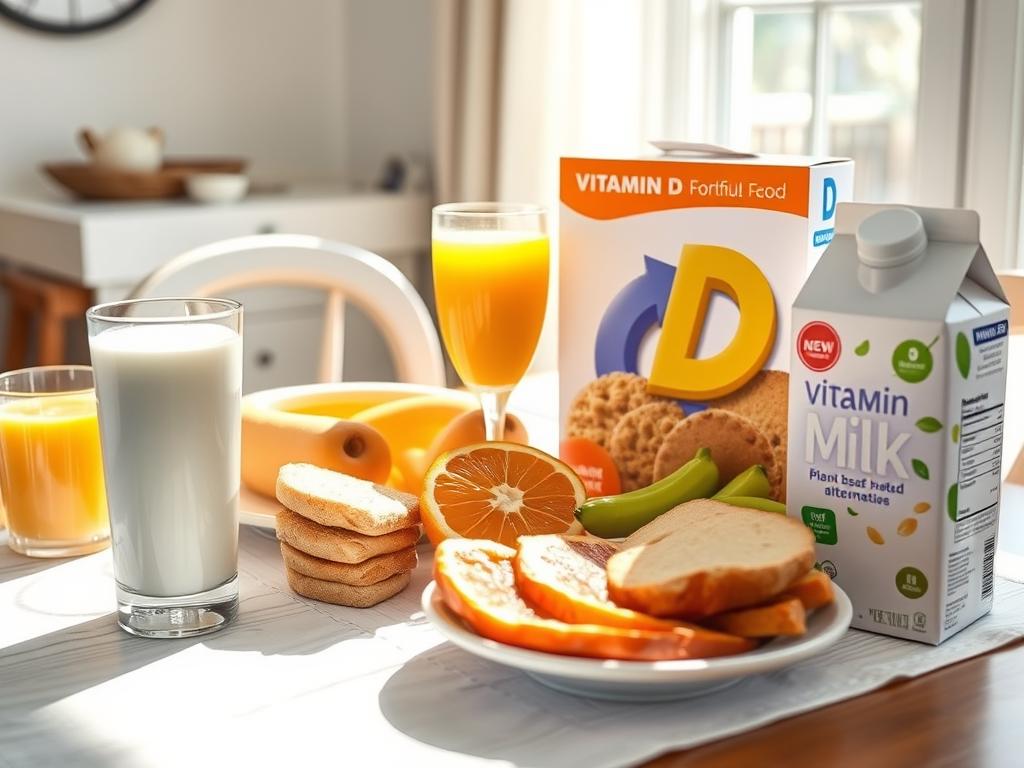
Many common foods are fortified with vitamin D to help prevent deficiency:
- Cow’s milk (fortified): 100-120 IU per 8-ounce cup (15% of daily value)
- Plant-based milks (fortified): 100-144 IU per 8-ounce cup (varies by brand)
- Orange juice (fortified): 100 IU per 8-ounce cup (12% of daily value)
- Breakfast cereals (fortified): 40-100 IU per serving (varies by brand)
- Tofu (fortified): 100 IU per 3.5-ounce serving (varies by brand)
Check product labels for vitamin D content, as fortification levels vary between brands and products. Look for the words “fortified with vitamin D” on packaging.
Lifestyle Tips to Maximize Natural Vitamin D
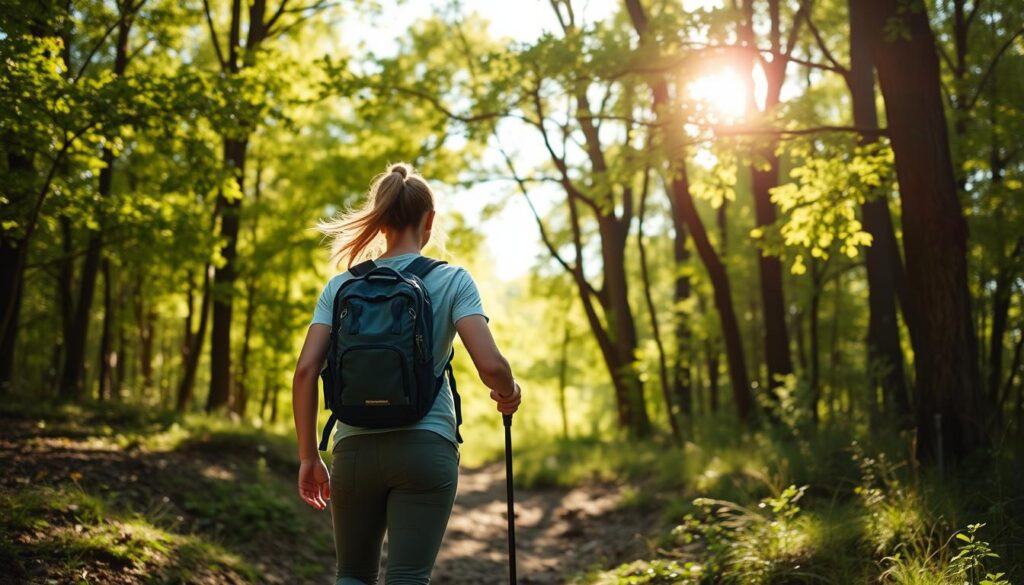
Optimizing Vitamin D Absorption
Several factors can enhance or inhibit how well your body utilizes vitamin D from natural sources:
Factors That Enhance Absorption:
- Healthy fats: Consume vitamin D-rich foods with avocados, olive oil, or nuts to improve absorption
- Adequate magnesium: Include magnesium-rich foods like leafy greens, nuts, and whole grains
- Regular exercise: Physical activity may help improve vitamin D metabolism
Factors That Inhibit Absorption:
- Excessive alcohol: Can interfere with vitamin D metabolism
- Smoking: May reduce vitamin D levels
- Certain medications: Some drugs like corticosteroids can affect vitamin D status
- Digestive disorders: Conditions affecting fat absorption can reduce vitamin D uptake
Combining Sources for Optimal Intake
Rather than relying on a single source, combine multiple natural vitamin D sources throughout your day:
| Time of Day | Vitamin D Strategy |
| Morning | 10-15 minutes of morning sun exposure + fortified breakfast (cereal with milk or eggs) |
| Midday | Lunch outdoors when possible + vitamin D-rich foods (tuna sandwich, fortified yogurt) |
| Evening | Dinner including fatty fish 2-3 times weekly or UV-exposed mushrooms |
| Weekly routine | Plan outdoor activities during peak sunlight hours (hiking, gardening, walking) |
Want to track your vitamin D intake from natural sources?
Special Considerations for At-Risk Groups

Certain populations face higher risks of vitamin D deficiency and may need to be more intentional about getting enough from natural sources:
Older Adults
Aging skin produces up to 75% less vitamin D from the same amount of sun exposure compared to younger adults.
- Spend more time outdoors during safe sun hours
- Consume more vitamin D-rich foods daily
- Consider fortified foods specifically marketed to seniors
People with Darker Skin
Higher melanin levels reduce vitamin D production from sunlight.
- May need 3-5 times longer sun exposure than lighter-skinned individuals
- Focus on consistent intake of vitamin D-rich foods
- Combine multiple sources (sun, fish, fortified foods)
Those with Limited Sun Access
Indoor workers, those in northern climates, or individuals who cover their skin for religious or cultural reasons.
- Prioritize vitamin D-rich foods year-round
- Take advantage of any sun exposure opportunities
- Consider UV-treated mushrooms as a reliable source
“While getting vitamin D solely from natural sources can be challenging for at-risk groups, a thoughtful combination of dietary choices and safe sun exposure can significantly improve levels without supplements for many people.”
When to consult a healthcare provider: If you belong to a high-risk group or experience symptoms of vitamin D deficiency (fatigue, bone pain, muscle weakness), speak with your healthcare provider. They can test your vitamin D levels and provide personalized recommendations.
Frequently Asked Questions About Natural Vitamin D
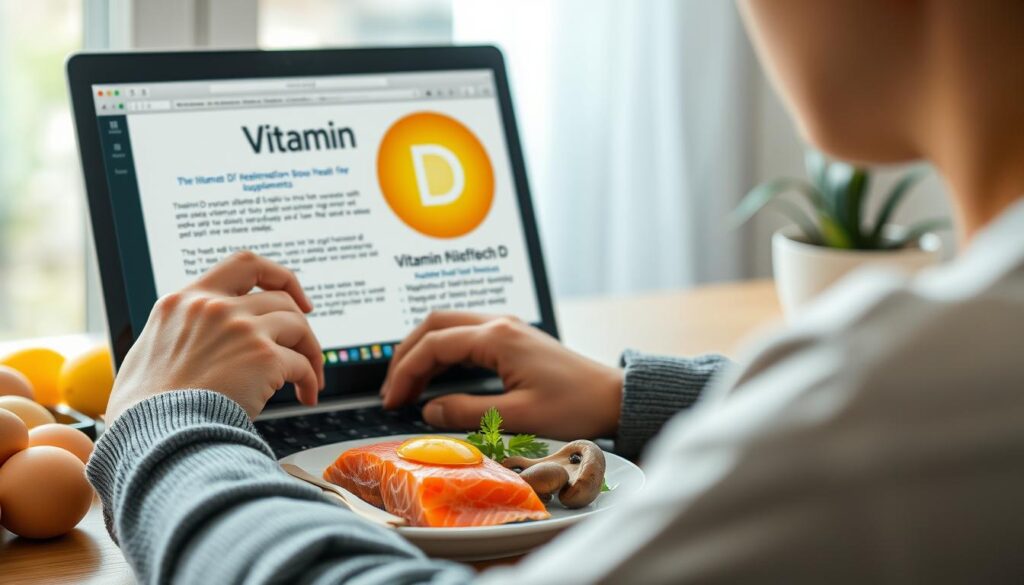
Can I get enough vitamin D from food alone?
It’s challenging but possible, especially if you regularly consume fatty fish, UV-exposed mushrooms, and fortified foods. Most experts recommend combining dietary sources with safe sun exposure for optimal levels without supplements.
How do I know if I’m getting enough vitamin D for bone health?
The most reliable way is through a blood test measuring 25-hydroxy vitamin D levels. Optimal levels for bone health are between 40-70 ng/mL. Your healthcare provider can order this test and help interpret the results.
Does cooking reduce the vitamin D content in foods?
Vitamin D is relatively stable during cooking. While some loss may occur, especially with high-heat methods, most of the vitamin D content remains intact. Baking, steaming, and gentle sautéing are good cooking methods for preserving nutrients.
Can I get vitamin D through a window?
No. Glass blocks the UVB rays needed for vitamin D production in your skin. You need direct sun exposure (not through windows) to produce vitamin D naturally.
Is it possible to get too much vitamin D from natural sources?
It’s virtually impossible to get too much vitamin D from sun exposure alone, as your body regulates production. It’s also difficult to get excessive amounts from food. Vitamin D toxicity typically only occurs from high-dose supplement use over extended periods.
Embracing Natural Vitamin D for Stronger Bones

Maintaining adequate vitamin D levels without supplements requires intentional lifestyle choices, but it’s achievable for many people through a combination of safe sun exposure and vitamin D-rich foods.
Remember these key strategies:
- Aim for 5-30 minutes of direct sun exposure several times weekly
- Include fatty fish in your diet 2-3 times per week
- Incorporate UV-exposed mushrooms, egg yolks, and fortified foods regularly
- Combine multiple vitamin D sources throughout your day
- Pay special attention to your needs if you’re in a high-risk group
By making these natural sources of vitamin D a priority in your daily routine, you can support strong, healthy bones without relying on supplements.
Need personalized guidance for your bone health?
Everyone’s vitamin D needs are unique. Consult with a healthcare provider to determine your specific requirements and whether natural sources are sufficient for your situation.


[…] Activates vitamin D […]
[…] (23 nuts) packs a nutritional punch that directly fuels cognitive processes. With 50% of your daily vitamin E needs met in one handful, these nuts deliver brain-protective antioxidants unmatched by most […]
[…] you wondering if a strong core is just about having visible abs? It’s not just about aesthetics; a robust core is […]